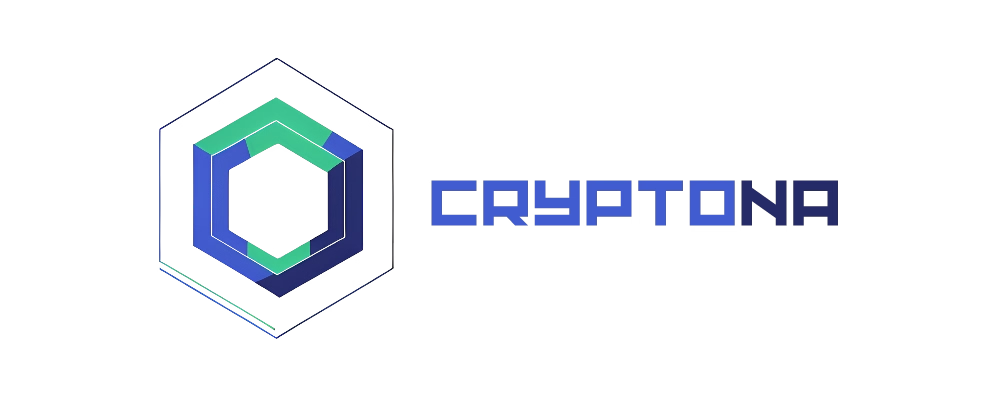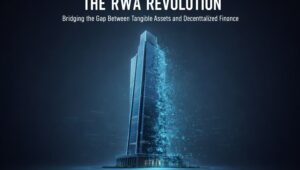The intersection of blockchain technology and immersive experiences has reached a pivotal moment with the launch of Mawari Network, a groundbreaking decentralized physical infrastructure network (DePIN) designed to power global real-time streaming of AI-driven XR content. Through a strategic partnership with Caldera, Mawari is positioning itself at the forefront of the spatial computing revolution.
The Dawn of Immersive Compute Networks
On August 15th, 2025, San Francisco-based Mawari officially announced its partnership with Caldera, the internet of interconnected, modular blockchains, to launch the world’s first Immersive Compute Network. This collaboration marks a significant milestone in the evolution of decentralized physical infrastructure networks, specifically targeting the burgeoning extended reality (XR) market.
Mawari Network represents more than just another DePIN project—it’s a comprehensive solution that orchestrates storage, bandwidth, and rendering capabilities through a globally distributed network of GPU nodes. The platform’s innovative approach addresses one of the most pressing challenges in the XR industry: delivering high-quality, low-latency immersive experiences at scale.
Revolutionary 3D Streaming Technology
At the core of Mawari’s offering lies its patented 3D streaming technology, which achieves an impressive 80% reduction in bandwidth usage while maintaining seamless delivery of interactive, immersive, and contextually relevant spatial computing experiences. This breakthrough addresses a critical bottleneck that has long plagued the XR industry—the massive bandwidth requirements for high-quality immersive content.
The technology works by leveraging advanced compression algorithms and intelligent content optimization, allowing complex 3D environments and AI-powered experiences to be streamed in real-time to everyday devices. This democratization of XR access removes the traditional barriers of expensive hardware requirements, making immersive experiences accessible to a broader audience.
Caldera Integration: Blockchain Meets Performance
The partnership with Caldera brings sophisticated blockchain infrastructure to Mawari’s technical stack. As Luis Oscar Ramirez, Founder & CEO of Mawari, explains: “Caldera lets us persist stream-quality measurements—latency, jitter, dropped frames, and frame accuracy—on-chain in near real time.”
This integration enables several key capabilities:
| Feature | Description | Benefit |
|---|---|---|
| Guardian Nodes | Produce signed Quality of Service (QoS) attestations | Transparent performance monitoring |
| Batch Processing | QoS records are batched to the rollup | Efficient on-chain data management |
| Reputation System | Node performance informs reputation scoring | Network quality assurance |
| Dynamic Routing | Performance data guides content routing decisions | Optimized user experience |
| Reward Calculations | Token rewards based on observed performance | Fair compensation for node operators |
Matthew Katz, CEO of Caldera, emphasizes the significance of this partnership: “We’re incredibly excited to have Mawari join the Caldera ecosystem. Mawari is pioneering an entirely new application of blockchain technology for the delivery of XR content.”
Proven Market Traction in Japan’s VTuber Industry
Mawari’s technology isn’t just theoretical—it’s already gaining significant traction in real-world applications. Two of Japan’s biggest VTuber agencies, Brave Group and Virtual Avex, are actively utilizing Mawari’s XR streaming technology through the vTubeXR product.
The partnership gained public attention when these agencies showcased Mawari’s capabilities at Expo 2025 Osaka, Kansai Japan in late May 2025. This demonstration highlighted the practical applications of decentralized XR streaming in the entertainment industry, particularly in the rapidly growing VTuber market.
Both agencies are part of Mawari’s Early Access Program, which provides:
- Priority access to new features and updates
- Dedicated onboarding support and technical assistance
- Customizable monetization opportunities
- Direct feedback channels for product development
Mawari plans to expand vTubeXR to a broader range of VTuber production companies and intellectual property holders, supporting the evolution of both user experience and business models in the virtual entertainment space.
Technical Architecture: Edge Computing Meets Blockchain
Mawari Network’s technical foundation rests on two core pillars that work in harmony to deliver exceptional XR experiences:
Patented Spatial Streaming Technology
The first pillar is Mawari’s proprietary spatial streaming technology, designed to work seamlessly with industry-standard development platforms including Unity and Unreal Engine. This compatibility ensures that developers can integrate Mawari’s streaming capabilities into existing workflows without significant technical barriers.
The streaming technology employs advanced algorithms for:
- Real-time 3D content compression
- Adaptive bitrate streaming based on network conditions
- Intelligent frame prediction and interpolation
- Dynamic quality adjustment for optimal performance
Distributed Edge Computing Network
The second pillar consists of strategically positioned edge computing nodes located near end-users worldwide. This distributed architecture enables smooth AR/VR experiences on everyday devices by handling computationally intensive rendering tasks remotely.
The edge network provides:
- Low Latency: Sub-20ms response times through geographical proximity
- High Availability: Redundant nodes ensure continuous service
- Scalable Processing: Dynamic resource allocation based on demand
- Quality Assurance: Continuous monitoring and performance optimization
The DePIN Advantage: Democratizing Infrastructure Participation
Mawari Network exemplifies the core principles of decentralized physical infrastructure networks by democratizing participation in XR infrastructure. Unlike traditional centralized approaches that require massive capital investments from large corporations, Mawari’s DePIN model allows anyone with GPU capacity to contribute to the network while earning rewards.
This approach offers several advantages:
| Advantage | Traditional Infrastructure | Mawari DePIN |
|---|---|---|
| Capital Requirements | High barrier to entry | Accessible to individuals |
| Geographic Coverage | Limited to profitable areas | Global reach through community |
| Scalability | Requires significant investment | Organic growth through incentives |
| Resilience | Single points of failure | Distributed fault tolerance |
| Innovation Speed | Slow corporate decision-making | Rapid community-driven development |
Market Opportunity: The XR Revolution
The timing of Mawari Network’s launch aligns perfectly with the projected growth of the extended reality market. Industry analysts predict that the XR market will exceed 100 million devices within the next five years, representing a massive opportunity for infrastructure providers.
Several factors are driving this growth:
- Hardware Improvements: More affordable and capable XR devices
- 5G Deployment: Enhanced network capabilities supporting immersive experiences
- AI Integration: Intelligent content generation and interaction
- Enterprise Adoption: Business applications beyond gaming and entertainment
- Social Experiences: Virtual collaboration and communication platforms
Mawari’s DePIN approach positions the network to capture value from this growth while providing the infrastructure necessary to support widespread XR adoption.
Token Economics and Sustainability
Mawari Network’s utility-based revenue model differentiates it from many other blockchain projects by anchoring value in real-world infrastructure and growing enterprise partnerships. This approach provides several sustainability advantages:
Revenue Streams
- Node Operation Rewards: GPU contributors earn tokens based on performance
- Quality Bonuses: Additional rewards for maintaining high service quality
- Enterprise Licensing: B2B revenue from commercial users
- Transaction Fees: Network usage fees distributed to stakeholders
Value Accrual Mechanisms
- Staking Requirements: Node operators stake tokens as performance bonds
- Governance Rights: Token holders participate in network decisions
- Fee Distribution: Revenue sharing with network participants
- Buyback Programs: Revenue used to reduce token supply
Competitive Landscape and Differentiation
The DePIN space is becoming increasingly competitive, with numerous projects targeting different aspects of decentralized infrastructure. Mawari Network’s focus on XR streaming provides several competitive advantages:
Technical Differentiation
- Specialized for XR: Purpose-built for immersive content delivery
- Proven Technology: Patented streaming algorithms with demonstrated results
- Industry Partnerships: Established relationships with content creators
- Performance Metrics: On-chain quality measurements ensure accountability
Market Positioning
- First-Mover Advantage: Early entry into XR DePIN space
- Enterprise Focus: B2B revenue model provides stability
- Geographic Strategy: Strong presence in high-growth Asian markets
- Scalable Architecture: Technology designed for global deployment
Future Roadmap and Development Plans
Mawari Network’s launch represents just the beginning of an ambitious roadmap aimed at becoming the backbone infrastructure for the global XR ecosystem. Key development priorities include:
Near-Term Goals (6-12 Months)
- Network Expansion: Deployment of additional edge nodes globally
- SDK Development: Tools for developers to integrate Mawari streaming
- Partnership Growth: Expansion beyond VTuber industry
- Performance Optimization: Continued improvement of streaming algorithms
Medium-Term Objectives (1-2 Years)
- AI Integration: Enhanced content generation and optimization
- Cross-Chain Compatibility: Integration with multiple blockchain networks
- Mobile Optimization: Improved performance on smartphones and tablets
- Developer Ecosystem: Comprehensive tools and documentation
Long-Term Vision (2-5 Years)
- Global Standard: Establish Mawari as the de facto XR streaming protocol
- Autonomous Operations: AI-driven network optimization and management
- Interoperability: Seamless integration with other DePIN networks
- Mass Market Adoption: Support for billions of XR experiences
Conclusion: Bridging XR and Web3
The launch of Mawari Network represents a significant milestone in the evolution of both DePIN and XR technologies. By combining proven streaming technology with innovative blockchain infrastructure, Mawari is creating new possibilities for immersive experiences while demonstrating the practical value of decentralized physical infrastructure networks.
The partnership with Caldera provides the technical foundation for transparent, auditable, and efficient operations, while early adoption by major Japanese entertainment companies validates the real-world utility of the platform. With the extended reality market poised for explosive growth, Mawari Network is well-positioned to capture value while democratizing access to XR infrastructure.
As the project continues to develop and expand its global footprint, it serves as a compelling example of how DePIN projects can create tangible value by solving real-world problems. The success of Mawari Network could pave the way for broader adoption of decentralized infrastructure models across various industries.
The convergence of AI, blockchain, and immersive technologies represented by Mawari Network signals the beginning of a new era in digital experiences. As we move toward a future where the boundaries between physical and digital realities continue to blur, infrastructure projects like Mawari Network will play a crucial role in making that future accessible to everyone.
For investors, developers, and technology enthusiasts, Mawari Network represents both an opportunity to participate in the next wave of technological innovation and a glimpse into the future of decentralized infrastructure. The project’s utility-based approach, proven technology, and growing market adoption position it as a significant player in the evolving DePIN ecosystem.
Disclaimer: This article is for informational purposes only and does not constitute investment advice. Cryptocurrency and DePIN investments carry significant risks, and potential investors should conduct their own research and consider their risk tolerance before making any investment decisions.






















Leave a Reply